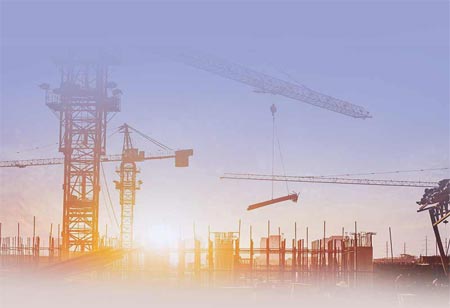Thank you for Subscribing to Construction Business Review Weekly Brief
Specials
- Apartment and Condominium Contractors Canada
- Decking Canada
- Architectural Glass Europe
- MEP APAC
- Construction Saudi Arabia
- German Apartment and Condominium Contractors
- Construction Law APAC
- Outdoor Construction
- Foundation Construction Canada
- MEP Canada
- Kitchen and Bath
- Cold Storage Construction APAC
- Precast Concrete Europe
- Construction Staffing Europe
- Pre-Construction Services
- Flooring System APAC
- Scaffolding Canada
- Swimming Pool Construction Canada
- Construction Management Canada
- Cold Storage Construction Canada
- Flooring Systems Europe
- Residential Construction
- Concrete Canada
- Construction Cladding Europe
- Construction Cladding APAC
- Concretes, Aggregates and Construction Materials APAC
- Concretes, Aggregates and Construction Materials Europe
- Commercial Contractors Europe
- Commercial Contractors APAC
- Dummy
- Construction Insulation, Coating and Waterproofing
- Construction Management APAC
- Landscaping Canada
- Construction Coating Europe
- Construction Tech Startups Europe
- Insulation Services Europe
- Mechanical Contractor Canada
- Mould Remediation and Testing Europe
- Swimming Pool Construction APAC
- Building Sealing Solutions Europe
- Construction Engineering Services
- Mechanical Electrical and Plumbing
- Roofing Systems Europe
- Architectural Glass APAC
- Startups APAC
- Construction Forensic and Owners Representative
- Flooring System
- Waterproofing APAC
- Wall Systems
- Safety and Compliance Europe
- Construction Bidding and Auctions
- Modular and Prefab Construction
- Architectural Glass
- Construction MENA
- Construction Demolition and Recycling Europe
- Modular Construction Europe
- Construction Interiors
- Steel Building APAC
- HVAC
- Doors and windows
- Construction Latam
- Building Information Modeling APAC
- Sustainable Construction APAC
- Building Restoration and Maintenance
- Commercial Contractors
- Specialty Construction
- Construction Engineering Canada
- Construction Engineering MENA
- Modular Construction Canada
- Modular Construction APAC
- Roofing and Siding Systems
- Workforce Management and Staffing
- Roofing Systems APAC
- Construction Consulting
- Steel Building Europe
- Construction Demolition and Recycling APAC
- Safety and Compliance APAC
- Concretes, Aggregates and Construction Materials
- Construction Cladding
Pioneering the Future of Building Practices
The construction industry is evolving through technological innovations like AI, sustainability practices, and modular buildings, which enhance efficiency, safety, and eco-friendliness across projects.

By
Construction Business Review | Monday, September 30, 2024
Stay ahead of the industry with exclusive feature stories on the top companies, expert insights and the latest news delivered straight to your inbox. Subscribe today.
The construction industry is evolving through technological innovations like AI, sustainability practices, and modular buildings, which enhance efficiency, safety, and eco-friendliness across projects.
FREMONT CA: The future of construction is undergoing a remarkable transformation, driven by technological advancements, sustainability imperatives and evolving design approaches. As the construction industry grapples with needing more efficient, eco-friendly, and resilient structures, innovations such as modular construction, 3D printing, and smart materials are reshaping traditional methods. Technological advances are transforming various sectors, and the construction industry is beginning to embrace this change. The emergence of large-scale AI and other digital technologies has accelerated shifts within the industry, highlighting the need for innovation. Organisations that adopt these technologies are likely to gain a competitive edge, marking the start of a new era in construction across Europe.
Emphasis on Green Building Practices
Sustainability is becoming increasingly important across all trades, including construction. Green building practices involve strategies that enable companies to meet environmental objectives. These practices focus on reducing energy consumption, minimising waste, and improving the overall quality of construction. Opportunities exist for companies to develop sustainable solutions, such as using eco-friendly materials, constructing energy-efficient buildings, conserving water, and designing spaces for urban agriculture. Implementing these practices contributes to creating sustainable communities, reducing the environmental footprint of construction, and enhancing the quality of life for residents.
Enhancing Building Safety Standards
Many countries have strengthened their building safety standards in response to significant incidents. Recent tragic events have highlighted critical deficiencies in fire safety protocols, prompting updates to regulations and inspections. Rigorous safety measures are being adopted to improve the integrity of structures, ensuring that hazardous materials are removed and that safety practices are strictly followed. Collaborative efforts among various stakeholders, including governments, developers, and property owners, are essential to navigate the complexities of safety refurbishments. This environment of political scrutiny requires developers to remain vigilant and allocate resources to address evolving challenges effectively.
Software Solutions for Improved Decision-Making
Construction companies increasingly recognise the potential of construction management software (CMS) to enhance productivity and reduce costs. These software solutions assist in managing timelines and resources, allowing firms to anticipate challenges before they escalate. Building Information Management (BIM) systems have also gained popularity, providing tools to create 3D models and simulate construction processes, thus streamlining operations and improving safety. However, careful consideration is required before implementing software solutions, as their costs and impacts on core operations need a thorough assessment to ensure optimal benefits.





